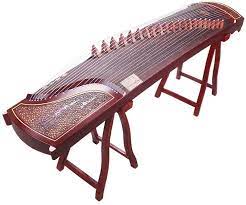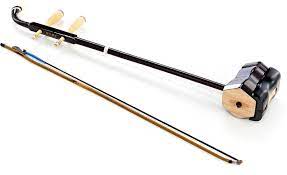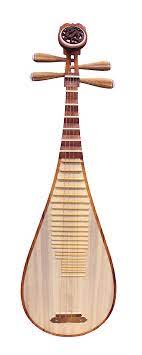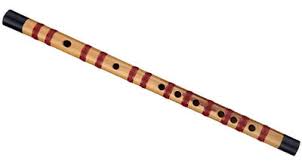Chinese Musical Instruments

Among the many traditional musical instruments of China, the most popular nowadays include the stringed instruments called the erhu, pipa, and guzheng, and the dizi flutes.
The stringed instruments originated in foreign regions and were modified. When tourists think of their experiences in China, the poignant sounds of these Chinese instruments often color their memories.
Erhu
erhu is one of the most important Chinese instruments, with a history of over 4,000 years. Though it has only two strings, it can convey a wide range of emotions.

While the erhu has been called the “Chinese violin,” it differs from the western instrument in many ways. First, it is played vertically, often resting on the musician’s lap. It has no fingerboard, so the player’s fingers must hold and vibrate the strings by pressing only against the strings themselves. The erhu bow is already fixed between the two strings, and the bow hair is either pushed forward or backward to catch a string. The music resonates from the instrument’s wooden drum, which acts as a natural amplifier. Intonation is one of the instrument’s greatest challenges, as different positions and degrees of pressure can dramatically change the free-floating strings’ pitch.
Xiaochun Qi’s Enchanting Erhu
Link where you can hear this instrument: https://www.shenyunperformingarts.org/explore/view/article/e/94I3V_FwFbM
Guzheng
The ancient guzheng came in different sizes and commonly consisted of 16 or more strings made of silk placed on movable bridges, with a large resonant cavity made from wood. In the 1950s and 1960s, the guzheng and a number of other traditional Chinese instruments underwent a major overhaul to expand their sound range and enhanced their expressiveness. This overhaul then prompted the creation of a large number of new compositions in Chinese music.

The redesign of the guzheng was spearheaded by Professor Wang Xunzhi from the Shanghai Conservatory of Music. An active member of the Shanghai music scene in the 1920s, Wang joined the Shanghai Conservatory of Music in 1956 when the school was established and with the help of his students documented a large number of traditional guzheng music, transcribing them from the traditional Chinese “gongchi” music score to that of the modern music sheet.
Jarelle Barton
Link where you can hear this instrument: https://www.youtube.com/watch?v=r1O87gps0SU
Pipa
The pipa became popular as Silk Road trade and travel brought Buddhism, and great change, to the region. It is thought that the instrument originated somewhere in western or southern Asia. The instrument was popular in Chengdu, the capital of the Tang Empire (618–907). Paintings and artwork of the Tang era depict the pipa being played by musicians in flowing robes.

Nowadays, pipa musicians will mainly be seen on the stage or perhaps as entertainers at special parties or restaurants. Modern pipas have been re-engineered to fit better with Western-style music. Steel strings are now used, so players wear special finger plectra.
Link where you hear this instrument: https://www.youtube.com/watch?v=iuxTywpBJNI
- Dizi
The dizi or bamboo flute is one of the most popular instruments in traditional Chinese music. The Chinese flute is played horizontally, much like a western flute, and is commonly carved out of a single piece of bamboo with a cork-lined blow-hole.

The body of the flute has six finger-holes at measured distances. It also features an extra hole between the blow-hole and finger-holes which is covered by a thin membrane of reed and gives the dizi a bright, resonant, and slightly humming tone. While many of the world’s cultures have similarly carved flutes, only the dizi has this unique feature.
Link where you can hear this instrument:




